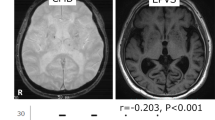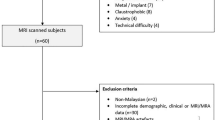Abstract
Hypertension is the most significant risk factor of cerebral small vessel disease (SVD). SVD raises the likelihood of poor functional outcomes in independent older adults, though the underlying causes remains uncertain. This study aimed to investigate the link between incident events and poor functional outcomes in individuals with SVD. In this post hoc analysis, data were sourced from a Japanese observational registry, including 1011 patients with cerebral vessel disease evident on magnetic resonance imaging and vascular risk factors. Follow-up continued until March 2023. After excluding participants with suspected dementia, Modified Rankin Scale (mRS) scores of 2 or more, or missing Mini-Mental State Examination results, 859 patients were analyzed. SVD was defined as moderate to severe white matter hyperintensity (WMH) and/or the presence of lacune. The study’s outcome was a poor functional status defined as a mRS score ≥3 at the last visit. Over a median follow-up of 4.6 years, 50 patients died, and 85 experienced poor functional outcomes. WMH or lacune were associated with an increased risk of all-cause mortality and poor functional outcomes. Key causes of death included cancer, heart disease, pneumonia and senility, while stroke, dementia and fall-related injuries also elevated the risk of poor functional outcomes. WMH or lacune specifically heightened the risk of stroke and dementia. In conclusion, SVD elevates the risk of poor functional outcomes primarily via incident stroke and dementia. To maintain independence in daily activities among elderly individuals, targeted prevention of stroke and dementia is crucial in patients with SVD.

Proposed mechanism linking small vessel disease, typically white matter hyperintensity/lacune, with poor functional outcome. Seven incident events, neoplasm, heart disease, stroke, dementia, falls, pneumonia, and motor function impairment, potentially related to poor functional outcomes. In elderly patients, SVD significantly increases the risk of stroke, and moderately raises the risk of dementia, pneumonia, and motor impairment which may be related to senility. This relationship helps explain why patients with SVD are more likely to experience poor functional outcomes compared to those without SVD.
This is a preview of subscription content, access via your institution
Access options
Subscribe to this journal
Receive 12 print issues and online access
$259.00 per year
only $21.58 per issue
Buy this article
- Purchase on SpringerLink
- Instant access to full article PDF
Prices may be subject to local taxes which are calculated during checkout




Similar content being viewed by others
References
Wardlaw JM, Smith C, Dichgans M. Small vessel disease: mechanisms and clinical implications. Lancet Neurol. 2019;18:684–96.
Pantoni L. Cerebral small vessel disease: from pathogenesis and clinical characteristics to therapeutic challenges. Lancet Neurol. 2010;9:689–701.
Debette S, Schilling S, Duperron MG, Larson SC, Markus HS. Clinical significance of magnetic resonance imaging markers of vascular brain injury: a systematic review and meta-analysis. JAMA Neurol. 2019;76:81–94.
Del Brutto VJ, Mera R, Recalde BY, Rumbea DA, Costa AF, Del Brutto OH. Total cerebral small vessel disease score and all-cause mortality in older adults of Amerindian ancestry: the Atahualpa Project. Eur Stroke J. 2021;6:412–9.
Kitagawa K, Toi S, Hosoya M, Seki M, Yamagishi S, Hoshino T, et al. Small vessel disease burden predicts incident dementia and poor functional outcome in independent outpatients. J Alzheimers Dis. 2024;101:751–60.
Annual Health, Labour and Welfare Report 2020. Avaerage life span and healthy life span, Ministry of Health, Labour and Welfare, Japan. https://www.mhlw.go.jp/stf/wp/hakusyo/kousei/19/backdata/01-01-02-06.html.
Annual Health, Labour and Welfare Report 2023. Vital statistics. Ministry of Health, Labour and Welfare, Japan. https://www.mhlw.go.jp/toukei/saikin/hw/jinkou/geppo/nengai23/index.html.
Annual report of aging society 2022, Cabinet Office, Government of Japan. https://www8.cao.go.jp/kourei/whitepaper/w-2022/html/zenbun/index.html.
Loos CM, McHutchison C, Cvoro V, Makin SD, Staals J, Chappell F, et al. The relation between total cerebral small vessel disease burden and gait impairment in patients with minor stroke. Int J Stroke. 2018;13:518–24.
Zhang L, Tang X, Li Y, Zhu J, Ding D, Zhou Y, et al. Total magnetic resonance imaging of cerebral small vessel disease burden predicts dysphagia in patients with a single recent small subcortical infarct. BMC Neurol. 2022;22:1.
Fandler S, Gattringer T, Eppinger S, Doppelhofer K, Pinter D, Niederkorn K, et al. Frequency and predictors of dysphagia in patients with recent small subcortical infarcts. Stroke. 2017;48:213–5.
Kitagawa K, Toi S, Hosoya M, Yoshizawa H. Small-vessel disease and intracranial large artery disease in brain mri predict dementia and acute coronary syndrome, respectively: a prospective, observational study in the population at high vascular risk. J Am Heart Assoc. 2024;13:e033512.
Fazekas F, Chawluk JB, Alavi A, Hurtig HI, Zimmerman RA. MR signal abnormalities at 1.5 T in Alzheimer’s dementia and normal aging. Am J Roentgenol. 1987;149:351–6.
Staals J, Makin SD, Doubal FN, Dennis MS, Wardlaw JM. Stroke subtype, vascular risk factors, and total MRI brain small-vessel disease burden. Neurology. 2014;83:1228–34.
Duering M, Biessels GJ, Brodtmann A, Chen C, Cordonnier C, de Leeuw FE, et al. Neuroimaging standards for research into small vessel disease-advances since 2013. Lancet Neurol. 2023;22:602–18.
Kim GH, Kim JE, Choi KG, Lim SM, Lee JM, Na DL, et al. T1-weighted axial visual rating scale for an assessment of medial temporal atrophy in Alzheimer’s disease. J Alzheimers Dis. 2014;41:169–78.
Futamura A, Hieda S, Mori Y, Kasuga K, Sugimoto A, Kasai H, et al. Toxic Amyloid-β42 conformer may accelerate the onset of Alzheimer’s disease in the preclinical stage. J Alzheimers Dis. 2021;80:639–46.
Bando M, Miyatake N, Kataoka H, Kinoshita H, Tanaka N, Suzuki H, et al. Changes and variations in death due to senility in Japan. Healthcare. 2020;8:443.
White WB, Wakefield DB, Moscufo N, Guttmann CRG, Kaplan RF, Bohannon RW, et al. Effects of intensive versus standard ambulatory blood pressure control on cerebrovascular outcomes in older people (INFINITY). Circulation. 2019;140:1626–35.
Huo YC, Li Q, Zhang WY, Zou N, Li R, Huang SY, et al. Total small vessel disease burden predicts functional outcome in patients with acute ischemic stroke. Front Neurol. 2019;10:808.
Ryu WS, Jeong SW, Kim DE. Total small vessel disease burden and functional outcome in patients with ischemic stroke. PLoS One. 2020;15:e0242319.
Bu N, Khlif MS, Lemmens R, Wouters A, Fiebach JB, Chamorro A, et al. Imaging markers of brain frailty and outcome in patients with acute ischemic stroke. Stroke. 2021;52:1004–11.
Lioutas VA, Wu B, Norton C, Helenius J, Modak J, Selim M. Cerebral small vessel disease burden and functional and radiographic outcomes in intracerebral hemorrhage. J Neurol. 2018;265:2803–14.
Kimura Y, Miwa K, Takasugi J, Oyama N, Todo K, Sakaguchi M, et al. Total small vessel disease score and functional outcomes following acute intracerebral hemorrhage. J Stroke Cerebrovasc Dis. 2020;29:105001.
Hayashi R, Imanaga T, Marui E, Kinoshita H, Ishii F, Shinohara E, et al. Senility deaths in aged societies: the case of Japan. Glob Health Med. 2024;6:40–48.
Kant IMJ, Mutsaerts HJMM, van Montfort SJT, Jaarsma-Coes MG, Witkamp TD, Winterer G, et al. The association between frailty and MRI features of cerebral small vessel disease. Sci Rep. 2019;9:11343.
Siejka TP, Srikanth VK, Hubbard RE, Moran C, Beare R, Wood A, et al. Frailty and cerebral small vessel disease: a cross-sectional analysis of the Tasmanian Study of Cognition and Gait (TASCOG). J Gerontol A Biol Sci Med Sci. 2018;73:255–60.
Hosoya M, Toi S, Yoshizawa H, Kitagawa K. Slow gait speed predicts incident dementia, mortality, and long-term functional outcome in cerebral small-vessel disease. J Alzheimers Dis. 2024;101:499–508.
Hosoya M, Toi S, Seki M, Hoshino T, Sato Y, Yoshizawa H, et al. Motor function is associated with cerebral small vessel disease and can predict mortality and poor functional outcome. Cerebrovasc Dis. 2024;1–10.
Xu J, Murphy SL, Kochanek KD, Arias E. Mortality in the United States, 2021. NCHS Data Brief. 2022:1–8.
World Health Organization. ICD-11, International Classification of Diseases 11th Revision. The global standard for diagnostic health information. 2019 https://icd.who.int/en.
Sakakibara R, Panicker J, Fowler CJ, Tateno F, Kishi M, Tsuyuzaki Y, et al. Vascular incontinence: incontinence in the elderly due to ischemic white matter changes. Neurol Int. 2012;4:e13.
Clancy U, Gilmartin D, Jochems ACC, Knox L, Doubal FN, Wardlaw JM. Neuropsychiatric symptoms associated with cerebral small vessel disease: a systematic review and meta-analysis. Lancet Psychiatry. 2021;8:225–36.
Wang Y, Li Y, Liu S, Liu P, Zhu Z, Wu J. Gait characteristics related to fall risk in patients with cerebral small vessel disease. Front Neurol. 2023;14:1166151.
Sun CY, Hsu LC, Su CC, Li CY, Chao CT, Chang YT, et al. Gait abnormalities and longitudinal fall risk in older patients with end-stage kidney disease and sarcopenia. BMC Geriatr. 2024;24:937.
Pan D, Chung S, Nielsen E, Niederman MS. Aspiration pneumonia. Semin Respir Crit Care Med. 2024;45:237–45.
Teramoto S. The current definition, epidemiology, animal models and a novel therapeutic strategy for aspiration pneumonia. Respir Investig. 2022;60:45–55.
Torres A, Cilloniz C, Niederman MS, Menéndez R, Chalmers JD, Wunderink RG, et al. Pneumonia. Nat Rev Dis Prim. 2021;7:25.
Colón-Emeric CS, McDermott CL, Lee DS, Berry SD. Risk assessment and prevention of falls in older community-dwelling adults: a review. JAMA. 2024;331:1397–1.
Acknowledgements
The authors extend their heartfelt appreciation to Dr. Megumi Hosoya, Misa Seki and Moeko Saito for their expertise in conducting the cognitive function test.
Author information
Authors and Affiliations
Corresponding author
Ethics declarations
Conflict of interest
KK received lecture fee from Daiichi-Sankyo, Kowa, Chugai, Kyowa Kirin, ST reported no relevant disclosures, HY received lecture fee from Eisai, Kyowa Kirin and Kowa, KT received lecture fee from Daiichi-Sankyo, Fujimoto Pharmaceutical Corporation, and Abbott.
Additional information
Publisher’s note Springer Nature remains neutral with regard to jurisdictional claims in published maps and institutional affiliations.
Supplementary information
Rights and permissions
Springer Nature or its licensor (e.g. a society or other partner) holds exclusive rights to this article under a publishing agreement with the author(s) or other rightsholder(s); author self-archiving of the accepted manuscript version of this article is solely governed by the terms of such publishing agreement and applicable law.
About this article
Cite this article
Kitagawa, K., Toi, S., Yoshizawa, H. et al. Small vessel disease increases risk of poor outcome through stroke and dementia. Hypertens Res 48, 2234–2242 (2025). https://doi.org/10.1038/s41440-025-02242-8
Received:
Revised:
Accepted:
Published:
Issue date:
DOI: https://doi.org/10.1038/s41440-025-02242-8
Keywords
This article is cited by
-
The brain-kidney axis in cerebral small vessel disease: chronic kidney disease as an active mediator, not just a confounder
Hypertension Research (2025)
-
Comment on “Small vessel disease increases risk of poor outcome through stroke and dementia”
Hypertension Research (2025)



